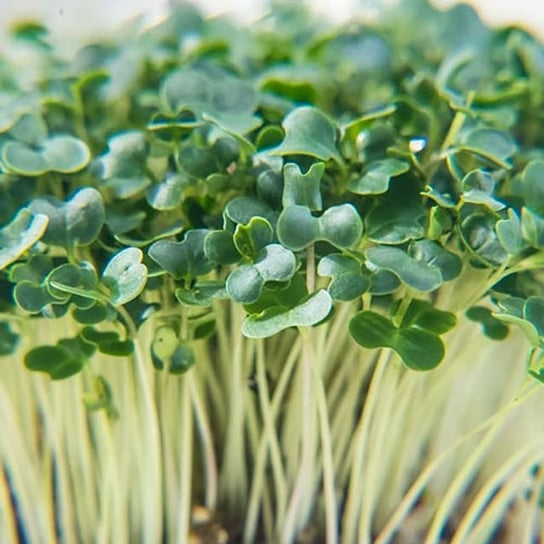
Microgreens: you’ve probably heard about them before. Despite what you might think, they are not the same thing as spouts-- though they are similar. But what are microgreens exactly?
Idaho State University’s Continuing Education and Workforce Training interviewed Raederle Clay, Application Administrator for ISU’s Information Technology Services and instructor for an upcoming Growing Microgreens course, to explain more about microgreens and the benefits they provide.
CEWT: Tell a little about your backstory/how long you’ve been working for ISU/ other courses you’ve taught for CEWT/ etc.
Raederle: I grew up in Idaho and got my A.A.S. in Web Site Design & Management through the College of Technology. I moved to Minnesota for about ten years to work, and moved back to Idaho in 2017 to be closer to my family and to look for land to build a sustainable and regenerative farm. I work in IT Services at ISU and am developing my farm during my free time.
CEWT: How did you get interested in microgreens?
R: In 2018, I was living in a rental location in Pocatello and was looking for a way to add produce that didn't require a lot of space to grow to my booth at the Portneuf Valley Farmers Market. I had been following Curtis Stone for a couple of years when I was growing and selling produce in Minnesota, and he shared a photo of his microgreens operation in a free webinar, which inspired me to try growing them myself. They have proven to be quite popular since that year, and I have continued to grow them not only for the farmers market and for restaurants, but also for my own consumption.
CEWT: What are microgreens specifically?
R: Microgreens are the stage of growth between sprouts and baby greens. Although they are similar to sprouts, they are more colorful, flavorful, and nutritious than sprouts, and more tender than baby greens. Unlike sprouts, which are grown in water and are more prone to developing harmful bacteria, microgreens are grown in soil or another medium, with only the roots in contact with water after they sprout, and are much less likely to develop or spread pathogens.
CEWT: What are some of the health benefits of microgreens?
R: Microgreens are an excellent way to get vitamins and minerals in your diet. Like baby and mature salad greens, microgreens are nutrient-rich. While sprouts only contain the nutrients available within the seed they sprout from, microgreens obtain some nutrients from the soil they are grown in and manufacture some through photosynthesis. Microgreens that are reddish colored or have red or purple stems, such as amaranth, mustard, kale, and buckwheat, develop anthocyanins, a type of antioxidant. Baby and mature greens also contain these nutrients, but at a lower concentration due to their size; nutrients are concentrated in the smaller microgreens.
CEWT: In your upcoming microgreens class, what do you hope students will take out of your class?
R: After taking this class, students should have an understanding of the process for growing microgreens, including the amount of materials required (including seeds), how long it takes to grow different varieties, and techniques for improving germination (sprouting) and accelerating growth rates, such as adding artificial light and heat. Additionally, each student goes home with a standard-sized tray and enough seeds to grow four trays' worth of microgreens, allowing them to try different varieties and learn what adjustments they may need to make for their situation. They also get to see what a larger-scale operation uses to ensure consistent results and are able to get feedback on setting up their own system.
CEWT: Why should someone take this class?
R: Microgreens are an easy crop to grow indoors and year-round. An estimated 10% of households in the United States are considered "food insecure," including in Idaho - that is, they don't have access to enough food to support their activities and nutrient requirements (either due to financial problems or other resources related to food access). Since COVID-19, it's estimated that number has climbed to 25% or higher. A single tray of microgreens, taking up about 2 square feet of space on a counter or shelf, can provide enough nutritious and flavorful salad greens for 3-4 meals for two adults for less than $10.
CEWT: Anything else you would like to add?
R: Probably the most common way to eat microgreens is in salads. They're also great on sandwiches and burgers, or as garnish on meat dishes. Additionally, if properly dehydrated and stored to retain their nutrient profile, microgreens can be crumbled and added to foods like gravies and soups, or substituted for parsley or other herbs.
To register for the Growing Microgreens, or for more information on the course, click here.

-1.png)
